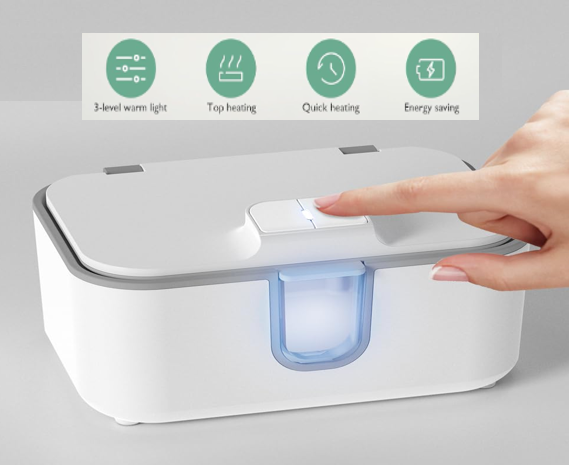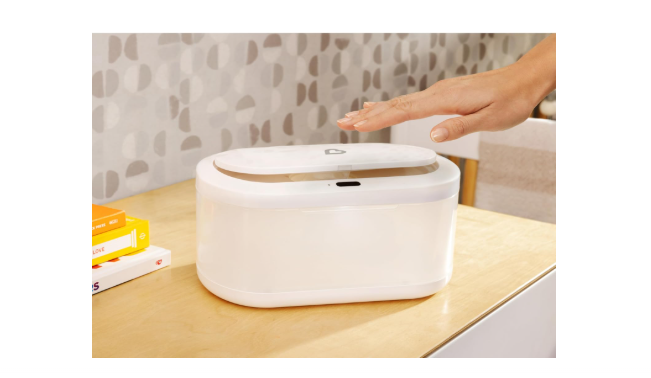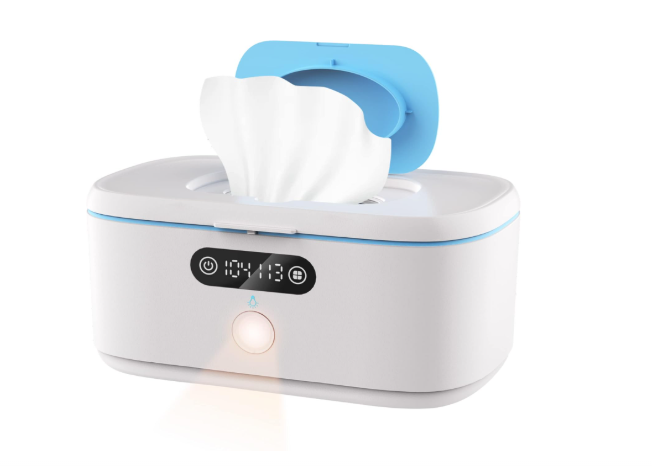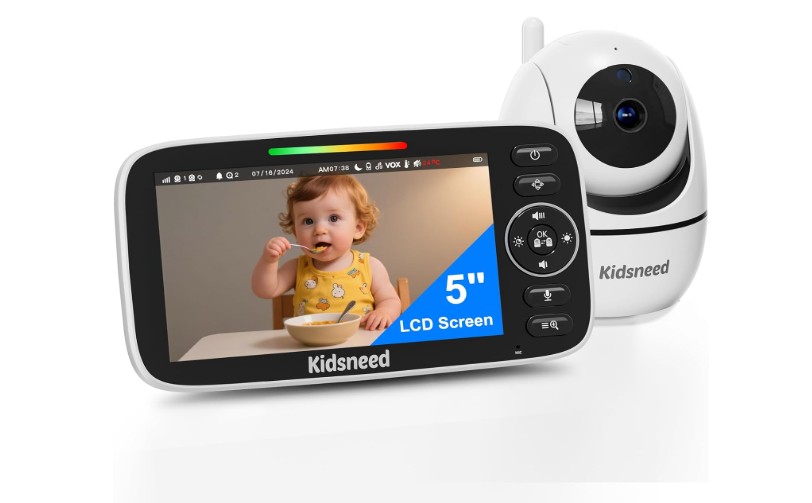When it comes to baby care, every parent is looking for tools that make the job easier and more comfortable for their babies. A baby wipe warmer is one such convenience. It keeps the wipes warm for cold weather, especially for late-night diaper changes. However, while these gadgets can add comfort, they can also pose risks to the baby if not used properly.
Unfortunately, many parents unknowingly make safety mistakes with these wipe warmers, which could put their child at risk. You could also see 10 of the best wipe warmer brands on Amazon today.
In this blog, we will highlight five common safety mistakes parents make with wipe warmers and share practical tips to avoid them.
1. Leaving the Wipe Warmer Plugged in 24/7
One of the parents’ biggest mistakes is keeping the wipe warmer plugged in 24/7. This means they will keep generating heat around the clock. Overheating can dry out the wipes, damage the unit, and in rare cases, pose a fire hazard.
Why it’s risky:
Bacteria Growth
Continuous heat gives the bacteria a conducive environment to grow and multiply rapidly. By switching off the device from time to time, it disrupts the microbes’ lives, and that’s how their growth is deterred.
Fast Wear and Tear
Like any other gadget, the baby wipe warmer has a lifespan, which depends on the time used. The prolonged use wears out the warmer faster, significantly reducing the unit’s lifespan.
Risk of Electrical Hazards
If the wipe warmer is left to operate continuously, the risk of heating grows with time. If this happens, the unit might become faulty and possibly start a fire. Therefore, if left near flammable materials, it might cause a fire.
It is recommended that you unplug the baby wipe warmer when not in use. If you are going out or it is during the day, and you don’t need warm wipes, turn it off. Most units will take about 30 minutes to warm the wipes.
Another common safety mistake is stuffing too many wipes into the warmer. Parents mostly do this to “save time” by reducing refilling frequency. Whereas this is true, the disadvantage is that it reduces the room for airflow. So, proper heat distribution is not achieved, which usually leads to unevenly heated wipes.
2. Overfilling With Wipes
Why it’s risky:
Excess Wipes Trap Moisture
With heating chambers filled to max capacity, this means a lot of moisture is being generated. This results in promoting mold and mildew growth. These two are known to cause allergic and respiratory problems.
Dry Wipes
With the chambers filled to the brim and the moisture circulation a bit constrained, it can lead to the wipes near the heating elements getting extra heated. The result would be dried or scorched baby wipes at the bottom, top, or just near the heating element.
Straining the Lid
Overstuffing increases the strain on the lid and seal, causing leaks. This may also significantly reduce the effectiveness of the baby wipes warmer.
To solve the problem of overfilling, always observe the recommended manufacturer capacity.
3. Neglecting Regular Cleaning and Maintenance
Like bottles, pacifiers, or humidifiers, baby wipe warmers need consistent cleaning. The buildup of dirt and microbes happens slowly, and before the parent knows it, the device is making their child sick. Never assume that since wipes are moist and sealed, the baby wipe warmer will stay sanitary on its own.
Why it’s risky:
Bacteria Buildup
Dirty wipe warmers provide bacteria and other microbes a perfect environment to breed. These bacteria will eventually find their way into the wipes. That’s when parents will start seeing rashes on the baby’s skin.
Heating Element Clogging
If not cleaned regularly, dirt will build up all over the device. The most affected part is the heating element, which will begin to deteriorate in performance. The unit will start heating slowly and might even get damaged.
Mold Growth
Mold is among the microbes that will grow in a poorly cleaned baby wipe warmer. They are notorious for causing allergies and respiratory problems.
So, clean the warmer weekly or as recommended by the manufacturer. Empty out all wipes, unplug the unit, and wipe down the inside with a mild baby-safe disinfectant solution. Always let the warmer dry completely before refilling it.
4. Using Tap Water Instead of Distilled Water
Most parents use the wrong water to warm wipes. To prevent the wipes from drying out, you must add water to the warming chamber. Unfortunately, most parents use water directly from the tap, which is not recommended.
Why it’s risky:
Residue
Tap water contains minerals that leave behind residue or scale buildup. The scaling mostly affects the chamber body and could scratch off the anti-microbial layer. These residues may also accumulate on the heating element, ultimately reducing the gadget’s efficiency.
Microbes Growth
Minerals encourage bacterial growth inside the warmer. They provide the food needed by the bacteria to thrive.
Shortens Lifespan
With the heating element compromised and the wear of the heating chamber walls, the unit’s life is significantly reduced.
Always use distilled water when moistening wipes or adding water to the warmer. Distilled water is free of impurities and helps maintain both hygiene and the longevity of the warmer.
5. Placing the Warmer in Unsafe Locations
Parents sometimes underestimate the importance of where they position the wipe warmer. Leaving it near the baby’s crib, placing it on soft surfaces, or keeping it too close to other heat-generating appliances can create hazards.
Why it’s risky:
Fire Risks
Placing it on fabric surfaces (like bedding) increases the risk of overheating and fire. Such fires can damage your home or cause serious injuries to your baby.
Electric Shock
Proximity to water sources (like sinks) raises the chance of electric shock. If it falls into water while powered on, it can cause a fatal electric shock accident.
So, keep the wipe warmer on a stable, flat, and heat-resistant surface, away from fabrics and water sources.
Final Thoughts
Baby wipe warmers can be a great convenience, making diaper changes more comfortable for your baby, especially during cold nights. However, like any electrical device, they require safe handling and maintenance. By avoiding these five common mistakes—leaving it plugged in constantly, overfilling, neglecting cleaning, using tap water, and placing it in unsafe locations—you can minimize risks and maximize the benefits of your wipe warmer. If looking for this gadget, check out some of the top-ranking baby wipe warmer brands on Amazon.





